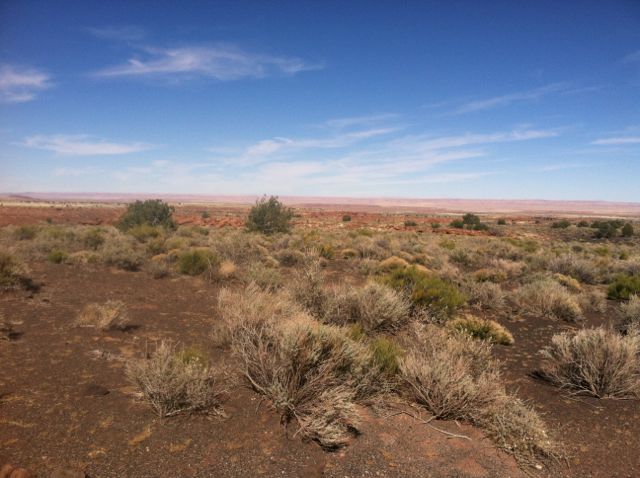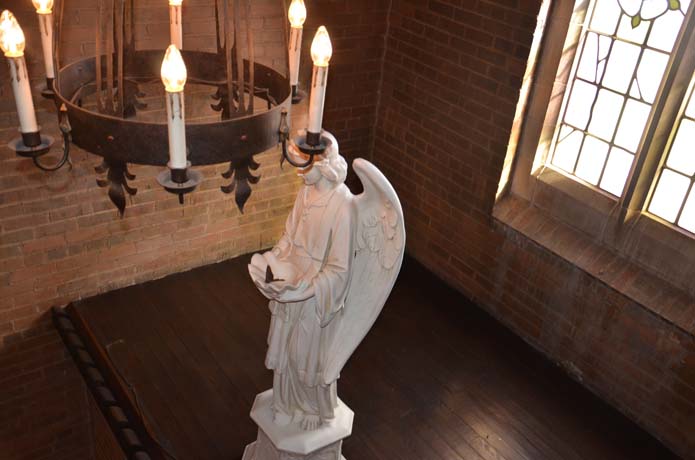
There is life in the desert. It is hard to face one’s preconceptions of a place or a people or a person or a liturgy or a musical style or a theological construct. To face these judgements requires great humility. It is hard to see people fast from chocolate cake in Lent and gorge on judgementalism. Hard and a little amusing. I sometimes need to face my judgments down like a teacher trying to quiet a rowdy class of third-graders after a field trip to a Hershey chocolate factory. (Seriously, they give you huge amounts of candy on those tours, even in Lent!)
I had always dismissed deserts as life-less, barren places in which I was going to find it hard to get good food. Butter, one of my favorite foods, will inevitably melt there and cream, one of my second favorite foods will curdle there. Television reception must be bad there. And then there is ice cream… No. I had decided that deserts were bad places and that New England farmer’s markets are good places. But that is juts a thought. And it is not just any kind of thought. It is what we call in “Art of Hosting” (the program we are launching on October 11th for three years of training) a “limiting belief.”
A limiting belief is just a negative thought. It is a thought which, when thought, produces a limiting or negative reaction or feeling. We have them all the time because we have thoughts all the time. We think approximately 60,000 thoughts per day and approximately 40 thoughts per minute or 1.7 billion in a lifetime (assuming an 80 year life). What amazes me is that we know how thoughts affect us, how they contribute to the health or degeneration of the physical body, how they fire chemicals into our bloodstream, how they inspire response and reaction, how they produce our statements and how they chart our courses, and yet we spend very little time observing, monitoring, managing, evaluating and sorting our thoughts. Most us of just let ’em rip.
Our thoughts bounce around inside our brains sometimes like Florence Nightingale, tending gently to the dis-eases we see in the world around us; but at other times like a Nazi concentration camp officer glancing at what we see in life as if what we see are little more than prisoners flowing out of recently arrived box-cars; nodding some to the left and some to the right while a smiling German Shepherd quietly druels.
Deserts are not lifeless places of deprivation. That is just a thought. And if I want butter and cream, “deserts are lifeless and bad” can be a negative thought. And we have these negative thoughts all the time based on what we consciously or subconsciously think we want or need – if we can even discern the difference. And what we want most is to be right – which adds gasoline to the brush-fire. Bring those people, thinking this way – together…and there can be problems. This is why a church or a family or a couple or a planet needs to learn more about limiting beliefs.
In “The Art of Hosting” program of formation which we will be doing in the cathedral over the next few years, we will be looking hard at “limiting beliefs” as a way to free ourselves from the power of our judgements and the power of other people’s judgements over and around us. This is about as courageous work as a human can delve into. It is what Jesus and Pilot were talking about when they were speaking in code with each other about truth. It is what Jesus and the Rich young Ruler were talking about when they were discussing eternity and life’s fears. It is what Jesus was getting at when he was speaking with Mary and Martha. It is both the life and the spirituality entry level course which most of us missed because we were watching tv and skipping class.
Lent is a great time to look at what we think are deserts and begin to see the abundance of life in them; and the courage of that life.
(For source resources on thoughts go to http://www.huffingtonpost.com/bruce-davis-phd/healthy-relationships_b_3307916.html)


 This statue of an angel holding a shell stands gently atop the vestibule from the Clarkson door beneath the southeast tower on which our bees will soon be installed. If one were to emerge from Dagwell Hall and climb the stairs to the chapter offices, the statue would be there to one’s left perched high above the hallway from which one enters the chapel of Saint Martin.
This statue of an angel holding a shell stands gently atop the vestibule from the Clarkson door beneath the southeast tower on which our bees will soon be installed. If one were to emerge from Dagwell Hall and climb the stairs to the chapter offices, the statue would be there to one’s left perched high above the hallway from which one enters the chapel of Saint Martin.